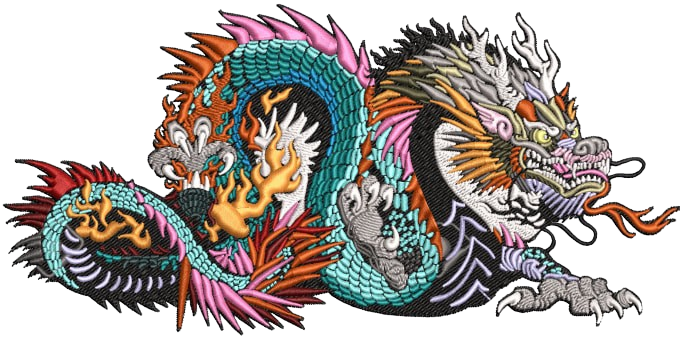The Hooping Station for Tajima Embroidery Machines Used: An Essential Guide
Embroidery is an historic artwork shape that has advanced over centuries, and these days, contemporary technology has made it less complicated than ever to create intricate designs on fabric. One of the most critical machines within the international of embroidery is the Tajima embroidery machine. These machines are recognized for his or her precision, speed, and versatility, making them a famous preference for both small businesses and huge-scale manufacturing. A key element of these machines is the hooping station, which plays a critical position in ensuring that material is properly organized for embroidery.
Table of Contents
In this weblog submit, we will explore what a hooping station is, how it works, and why it’s so essential for Tajima embroidery machines. Whether you are a student gaining knowledge of approximately the arena of embroidery or someone curious about how these machines paintings, this guide will help you recognize the important position of a hooping station.
What is a Hooping Station?
A hooping station is a device used to hold material tightly in region at the same time as it’s far being embroidered. In embroidery, the cloth ought to be stretched and held firmly within a hoop in order that the embroidery machine can stitch the layout correctly with out the fabric shifting. The hooping station makes this method simpler and quicker by using supplying a stable platform for attaching the fabric to the ring.
A Tajima embroidery machine is ready with a hooping station to help operators position the cloth correctly before it’s far embroidered. The gadget’s automated device works with the hooping station to make sure that the cloth is held securely even as the needles paintings their magic.
How Does the Hooping Station Work?
When you want to embroider on a piece of fabric, you first want to hoop the material. This manner placing the cloth in a circular hoop that holds it tight. The hooping station facilitates you function the cloth within the hoop, ensuring it’s far taut and smooth.
Here’s how the technique works in a Tajima embroidery machine:
- Preparing the Fabric: The cloth is first reduce to the preferred length and organized for embroidery. It is crucial that the material is wrinkle-free to make sure a clean embroidery process.
- Placing the Fabric within the Hooping Station: The material is placed over the hooping station, which is designed to preserve the fabric tightly in vicinity. The station commonly has adjustable clamps or grips to steady the fabric. The operator must ensure that the material is evenly stretched and free from wrinkles.
- Aligning the Hoop: Once the material is properly positioned, the ring is positioned over the material. The hooping station permits for unique alignment of the fabric with the hoop. The operator can adjust the fabric to ensure that the layout might be embroidered in the precise spot.
- Securing the Fabric inside the Hoop: After aligning the fabric, the ring is tightened to preserve the cloth securely in location. The hoop needs to be tight enough to prevent any moving at some stage in embroidery, however now not so tight that the material receives broken.
- Starting the Embroidery Process: With the cloth securely hooped, the operator can begin the embroidery system. The Tajima embroidery machine makes use of its computerized machine to sew the design onto the material.
Why is the Hooping Station Important for Tajima Embroidery Machines?
The hooping station is a crucial component of the embroidery procedure. Here are a few motives why it is so vital for Tajima embroidery machines:
Precision in Design Placement
When you’re operating on complicated designs, specific placement is prime. The hooping station ensures that the material is aligned successfully, so the design is stitched precisely in which you need it. Without a hooping station, it’d be lots greater difficult to position the material correctly, main to errors within the design.
Consistency in Quality
The hooping station allows ensure that the material is held firmly and evenly. This prevents the fabric from shifting or bunching throughout embroidery, that can result in choppy stitches or a distorted design. By retaining the cloth taut and secure, the hooping station contributes to constant and fantastic embroidery.
Time Efficiency
The hooping station saves time by using making the hooping process faster and extra efficient. Without a hooping station, the operator might ought to manually preserve the cloth in place or make more than one adjustments, that could gradual down the manufacturing process. With the hooping station, the operator can fast role the material, tighten the ring, and start the machine.
Reduced Risk of Fabric Damage
When fabric isn’t always well hooped, there is a threat that the cloth may additionally become broken throughout the embroidery technique. The hooping station guarantees that the cloth is stretched calmly and securely, decreasing the chance of any damage or distortion.
Improved Machine Performance
The Tajima embroidery machine is designed to work with the hooping station to supply terrific embroidery. By making sure that the fabric is well hooped, the system can carry out at its best, turning in particular stitches and delightful designs.
Different Types of Hooping Stations for Tajima Embroidery Machines
Tajima embroidery machines are available in one-of-a-kind fashions, and every model may additionally use a special sort of hooping station. Here are a few common types of hooping stations:
Manual Hooping Stations
In a manual hooping station, the operator is responsible for placing the material within the hoop and securing it in region. These stations are normally much less expensive and are often used for smaller-scale embroidery jobs. Manual hooping stations are generally used in smaller Tajima machines or with the aid of people running in smaller embroidery agencies.
Automatic Hooping Stations
Automatic hooping stations are designed to make the hooping procedure even quicker and more green. These stations use advanced era to robotically regulate the fabric and hoop position. The operator really hundreds the cloth into the machine, and the station does the relaxation. Automatic hooping stations are typically located in large Tajima embroidery machines used for excessive-extent manufacturing.
Multi-Needle Hooping Stations
Some Tajima embroidery machines use multi-needle hooping stations, which permit for using multiple needles in distinctive hues. These stations are designed for larger, more complicated designs and may increase manufacturing velocity by means of sewing multiple hues immediately. The hooping station is critical in ensuring that each one needles are aligned properly to create the design as intended.
Tips for Using the Hooping Station Effectively
To get the exceptional effects out of your Tajima embroidery machine, it’s far crucial to apply the hooping station efficiently. Here are some guidelines for powerful hooping:
- Always Ensure the Fabric is Wrinkle-Free: Wrinkles within the fabric can purpose problems during embroidery. Always ensure the fabric is smooth before setting it in the hooping station.
- Tighten the Hoop Properly: The hoop have to be tight sufficient to preserve the material in vicinity, but no longer so tight that it reasons harm to the fabric. Be sure to alter the hooping station to get the ideal tension.
- Use the Correct Hoop Size: Different fabric and designs require one-of-a-kind hoop sizes. Be sure to pick the right length hoop for your task.
- Check the Fabric Alignment: Before starting the embroidery gadget, double-test that the material is well aligned with the ring. Misalignment can lead to inaccurate stitching.
- Take Care of the Hooping Station: Keep the hooping station clean and well-maintained to make sure it features well. Regular renovation will extend the lifestyles of the device and preserve it running at its excellent.
People Also Ask
The hooping station is used to preserve fabric securely in vicinity at the same time as it is being embroidered. It ensures that the fabric is stretched frivolously and positioned successfully, allowing the Tajima embroidery system to create specific designs.
Yes, you can use maximum varieties of fabric with a hooping station, however it's miles vital to choose the right kind of hoop and adjust the anxiety for exclusive fabrics. Delicate fabrics like silk may additionally need to be handled greater carefully, even as heavier fabric like denim may additionally require more anxiety.
If the material is taut, easy, and aligned with the hoop, it is nicely hooped. You should also test for any wrinkles or shifts within the cloth before starting the embroidery process.
No, the hooping station is designed to be consumer-pleasant. While it could take a little exercise to grasp, it is an essential tool for every body operating with a Tajima embroidery device.
To keep your hooping station, keep it clean and unfastened from debris. Regularly check for any put on and tear, and make certain that each one moving components are nicely lubricated.
No, hooping stations are generally designed for particular brands and models of embroidery machines. While a few hooping stations are frequent and might work with specific machines, it's miles crucial to apply a hooping station this is well suited together with your Tajima embroidery gadget to make certain correct and green outcomes.
To regulate the hooping station for exceptional cloth thicknesses, you can want to modify the tension or use specific sorts of hoops designed for the specific material. Thicker fabric require extra tension to hold them tight, whilst sensitive fabrics can also need a lighter contact to avoid harm. Always test the fabric's balance after hooping earlier than starting the embroidery process.
Yes, there may be a method to ensure cloth is hooped properly on a Tajima device. Start by means of laying the fabric flat at the hooping station and ensuring it's miles clean and wrinkle-free. Align the cloth with the ring and tighten the hoop steadily, making sure no longer to over-tighten, which could harm the material. Always take a look at the fabric's positioning earlier than starting the embroidery.
Yes, hooping stations are perfect for custom embroidery tasks. Whether you are operating on private designs, logos, or problematic patterns, the hooping station allows role your material exactly, making sure that the design is embroidered in the proper area. Using the right hooping station is key to reaching expert-high-quality outcomes in custom embroidery.
If you're having problems with the hooping station, first make certain that the material is successfully aligned and secured in the hoop. Check for any unfastened or misaligned elements within the station. If the fabric shifts at some stage in embroidery, alter the tension or make certain the cloth is taut enough. If issues persist, check with the Tajima gadget’s person manual for precise troubleshooting pointers or consult a technician for more in-depth troubles.
Final Thought
The hooping station is an vital device for ensuring that cloth is properly organized for embroidery on a Tajima embroidery gadget. Whether you are operating with a guide or automatic hooping station, it performs a critical role in attaining precise, splendid designs. By following the tips and recommendations furnished in this submit, you may improve your embroidery abilties and make sure that your Tajima device offers beautiful effects whenever. Happy stitching!

Embroidery Digitizing
GetDigitizing provides professional embroidery digitizing services, transforming your designs into high-quality, machine-ready files for flawless stitching results.
Embroidery Quote

Vector Art
We can vectorize your raster image into your required vector format,Also we can redraw existing vector file, which can be used for screen printing or anything else.
Vector Quote

Live Image
"Live images offer dynamic, real-time visuals, capturing motion and changes, enhancing user experience with interactive, engaging, and up-to-date content."
Live Img Quote
GetDigitizing Most Popular Embroidery Design

1638 Sold
Price $3 Only

1578 Sold
Price $3 Only

1975 Sold
Price $3 Only

1769 Sold
Price $3 Only

1638 Sold
Price $3 Only

1578 Sold
Price $3 Only

1975 Sold
Price $3 Only

1769 Sold
Price $3 Only

1638 Sold
Price $3 Only

1578 Sold
Price $3 Only

1975 Sold
Price $3 Only

1769 Sold
Price $3 Only
